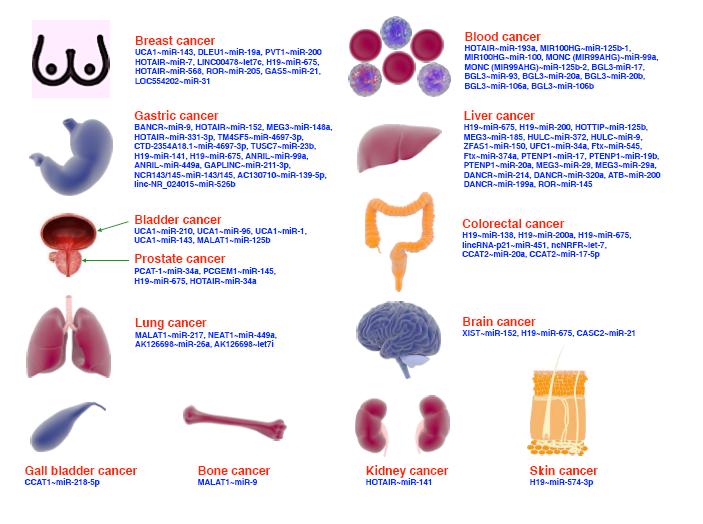| 1. |
Duthon V B, Barea C, Abrassart S, et al. Anatomy of the anterior cruciate ligament. Knee Surg Sports Traumatol Arthrosc, 2006, 14(3): 204-213.
|
| 2. |
Zuo Y, Shao J, Razmjooy N. Anterior cruciate ligament tear detection using gated recurrent unit and flexible fitness dependent optimizer. Biomedical Signal Processing and Control, 2024, 96: 106616.
|
| 3. |
Hewett T E, Di Stasi S L, Myer G D. Current concepts for injury prevention in athletes after anterior cruciate ligament reconstruction. The American Journal of Sports Medicine, 2013, 41(1): 216-224.
|
| 4. |
Kiapour A M, Murray M M. Basic science of anterior cruciate ligament injury and repair. Bone & Joint Research, 2014, 3(2): 20-31.
|
| 5. |
Oakden-Rayner L, Carneiro G, Bessen T, et al. Precision radiology: predicting longevity using feature engineering and deep learning methods in a radiomics framework. Scientific Reports, 2017, 7(1): 1648.
|
| 6. |
Wang R, Lei T, Cui R, et al. Medical image segmentation using deep learning: a survey. IET Image Processing, 2022, 16(5): 1243-1267.
|
| 7. |
Khalifa A F, Badr E. Deep learning for image segmentation: a focus on medical imaging. Comput Mater Contin, 2023, 75(1): 1995-2024.
|
| 8. |
Lee H, Hong H, Kim J. Segmentation of anterior cruciate ligament in knee MR images using graph cuts with patient-specific shape constraints and label refinement. Computers in Biology and Medicine, 2014, 55: 1-10.
|
| 9. |
Punitha N, Monapreetha M, Dhanasekar M G R. Active contour segmentation of the anterior cruciate ligament in MR images//2024 10th International Conference on Communication and Signal Processing (ICCSP), Chennai: IEEE, 2024: 491-495.
|
| 10. |
Erdur A C, Rusche D, Scholz D, et al. Deep learning for autosegmentation for radiotherapy treatment planning: State-of-the-art and novel perspectives. Strahlenther Onkol, 2025, 201(3): 236-254.
|
| 11. |
Aljabri M, AlGhamdi M. A review on the use of deep learning for medical images segmentation. Neurocomputing, 2022, 506: 311-335.
|
| 12. |
Long J, Shelhamer E, Darrell T. Fully convolutional networks for semantic segmentation//Proceedings of the IEEE Conference on Computer Vision and Pattern Recognition, Boston: IEEE, 2015: 3431-3440.
|
| 13. |
Ronneberger O, Fischer P, Brox T. U-net: convolutional networks for biomedical image segmentation//Medical Image Computing and Computer-Assisted Intervention–MICCAI 2015: 18th International Conference, Munich: Springer International Publishing, 2015: 234-241.
|
| 14. |
Milletari F, Navab N, Ahmadi S A. V-net: fully convolutional neural networks for volumetric medical image segmentation//2016 fourth International Conference on 3D Vision (3DV), Stanford: IEEE, 2016: 565-571.
|
| 15. |
孙军梅, 葛青青, 李秀梅, 等. 一种具有边缘增强特点的医学图像分割网络. 电子与信息学报, 2022, 44(5): 1643-1652.
|
| 16. |
Zhang C, Deng X, Ling S H. Next-Gen medical imaging: U-Net evolution and the rise of transformers. Sensors, 2024, 24(14): 4668.
|
| 17. |
Flannery S W, Kiapour A M, Edgar D J, et al. Automated magnetic resonance image segmentation of the anterior cruciate ligament. Journal of Orthopaedic Research, 2021, 39(4): 831-840.
|
| 18. |
Flannery S W, Kiapour A M, Edgar D J, et al. A transfer learning approach for automatic segmentation of the surgically treated anterior cruciate ligament. Journal of Orthopaedic Research, 2022, 40(1): 277-284.
|
| 19. |
Awan M J, Rahim M S M, Salim N, et al. Automated knee MR images segmentation of anterior cruciate ligament tears. Sensors, 2022, 22(4): 1552.
|
| 20. |
Dung N T, Thuan N H, Van Dung T, et al. End-to-end deep learning model for segmentation and severity staging of anterior cruciate ligament injuries from MRI. Diagnostic and Interventional Imaging, 2023, 104(3): 133-141.
|
| 21. |
Flannery S W, Barnes D A, Costa M Q, et al. Automated segmentation of the healed anterior cruciate ligament from T2* relaxometry MRI scans. Journal of Orthopaedic Research, 2023, 41(3): 649-656.
|
| 22. |
Fisher Y, Vladlen K. Multi-scale context aggregation by dilated convolutions//Proceedings of the International Conference on Learning Representations. San Juan: ICLR, 2016: 674-685.
|
| 23. |
Gültekin M Z, Dinçel Y M, Keskin Z, et al. Morphometric risk factors effects on anterior cruciate ligament injury. Joint Diseases and Related Surgery, 2023, 34(1): 130-137.
|
| 24. |
Woo S, Park J, Lee J Y, et al. Cbam: convolutional block attention module//Proceedings of the European Conference on Computer Vision (ECCV), Munich: ECCV, 2018: 3-19.
|
| 25. |
He K, Zhang X, Ren S, et al. Delving deep into rectifiers: surpassing human-level performance on imagenet classification//Proceedings of the IEEE International Conference on Computer Vision, Santiago: IEEE, 2015: 1026-1034.
|
| 26. |
Bien N, Rajpurkar P, Ball R L, et al. Deep-learning-assisted diagnosis for knee magnetic resonance imaging: development and retrospective validation of MRNet. PLoS Medicine, 2018, 15(11): e1002699.
|
| 27. |
Chen J, Lu Y, Yu Q, et al. Transunet: transformers make strong encoders for medical image segmentation. arXiv preprint, 2021, arXiv: 2102.04306.
|
| 28. |
Cao H, Wang Y, Chen J, et al. Swin-Unet: Unet-like pure transformer for medical image segmentation//European Conference on Computer Vision. Cham: Springer Nature Switzerland, 2022: 205-218.
|
| 29. |
Hu J, Shen L, Sun G. Squeeze-and-excitation networks//Proceedings of the IEEE Conference on Computer Vision and Pattern Recognition (CVPR), Salt Lake City: IEEE, 2018: 7132-7141.
|
| 30. |
Wang Q, Wu B, Zhu P, et al. ECA-Net: efficient channel attention for deep convolutional neural networks//Proceedings of the IEEE/CVF CONFERence on Computer Vision and Pattern Recognition, Seattle: IEEE, 2020: 11534-11542.
|
| 31. |
Chen L C. Rethinking atrous convolution for semantic image segmentation. arXiv preprint, 2017, arXiv: 1706.05587.
|
| 32. |
Diakogiannis F I, Waldner F, Caccetta P, et al. ResUNet-a: a deep learning framework for semantic segmentation of remotely sensed data. ISPRS Journal of Photogrammetry and Remote Sensing, 2020, 162: 94-114.
|
| 33. |
Liao W, Zhu Y, Wang X, et al. LightM-UNet: mamba assists in lightweight unet for medical image segmentation. arXiv preprint, 2024, arXiv: 2403.05246.
|
| 34. |
Ruan J, Li J, Xiang S. VM-UNet: vision mamba unet for medical image segmentation. arXiv preprint, 2024, arXiv: 2402.02491.
|




